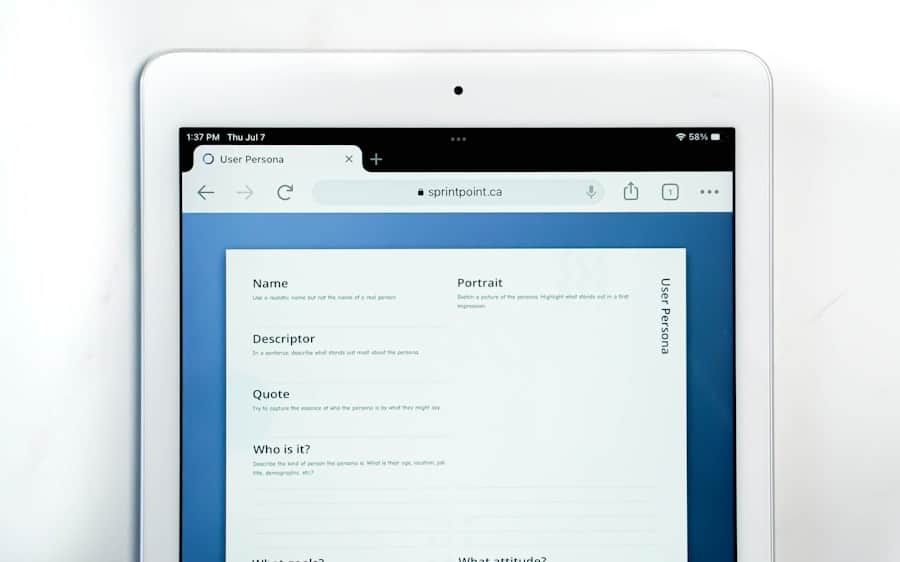The advent of augmented reality (AR) and virtual reality (VR) technologies has ushered in a new era in educational methodologies, transforming traditional learning environments into immersive experiences. These technologies allow students to engage with content in ways that were previously unimaginable, breaking down the barriers of time and space. By overlaying digital information onto the real world or creating entirely virtual environments, AR and VR applications provide unique opportunities for exploration, interaction, and understanding.
As educators seek innovative ways to enhance learning outcomes, the integration of AR and VR into the classroom has become increasingly prevalent. The potential of AR and VR in education extends beyond mere engagement; it offers a multi-sensory approach that caters to diverse learning styles. Visual learners can benefit from 3D models and simulations, while kinesthetic learners can interact with virtual objects, fostering a deeper understanding of complex concepts.
Furthermore, these technologies can facilitate experiential learning, allowing students to conduct virtual experiments or explore historical sites without leaving their classrooms. As educational institutions continue to embrace digital transformation, AR and VR stand at the forefront, promising to redefine how knowledge is imparted and absorbed.
Key Takeaways
- AR/VR apps are revolutionizing education by providing immersive and interactive learning experiences for students.
- Using AR/VR apps in the classroom can enhance student engagement, improve retention of information, and cater to different learning styles.
- Top AR/VR apps for science education include Google Expeditions, Anatomyou VR, and Universe Sandbox.
- For history education, apps like Civilisations AR, Titanic VR, and Rome Reborn offer students a chance to explore historical events and places in a virtual environment.
- Language learning can be enhanced with AR/VR apps such as Mondly, Rosetta Stone, and HelloTalk, which provide interactive and immersive language practice.
Benefits of Using AR/VR Apps in the Classroom
The integration of AR and VR apps in educational settings presents a multitude of benefits that enhance both teaching and learning experiences. One of the most significant advantages is the ability to create immersive learning environments that captivate students’ attention. Traditional teaching methods often struggle to maintain student engagement, particularly in subjects that may seem abstract or challenging.
AR and VR applications can transform these subjects into interactive experiences, making learning more enjoyable and effective. For instance, a biology class can utilize AR to visualize cellular structures in 3D, allowing students to explore the intricacies of life at a microscopic level. Moreover, AR and VR technologies promote active learning by encouraging students to participate in their education actively.
Instead of passively receiving information, learners can engage with content through simulations and interactive scenarios. This hands-on approach not only enhances retention but also fosters critical thinking and problem-solving skills. For example, a physics class might use VR simulations to experiment with forces and motion, enabling students to visualize concepts like gravity or friction in real-time.
Such experiences can lead to a deeper understanding of theoretical principles as students see their applications firsthand.
Top AR/VR Apps for Science Education

In the realm of science education, several AR and VR applications have emerged as powerful tools for enhancing student understanding. One notable example is “Google Expeditions,” which allows teachers to take students on virtual field trips to various scientific locations, such as the surface of Mars or the depths of the ocean. Through immersive 360-degree images and videos, students can explore environments that would otherwise be inaccessible, sparking curiosity and interest in scientific exploration.
Another exemplary app is “Labster,” which provides virtual laboratory simulations for a wide range of scientific disciplines. Students can conduct experiments in a risk-free environment, manipulating variables and observing outcomes without the constraints of physical lab resources. This not only democratizes access to high-quality science education but also allows students to practice their skills in a safe setting.
By engaging with realistic scenarios, learners can develop a deeper understanding of scientific methods and principles.
Top AR/VR Apps for History Education
History education benefits significantly from AR and VR applications that bring historical events and figures to life. One standout app is “TimeLooper,” which offers immersive experiences that transport users back in time to witness pivotal moments in history. For instance, students can experience the fall of the Berlin Wall or the signing of the Declaration of Independence through engaging narratives and visualizations.
This immersive storytelling approach helps students connect emotionally with historical events, fostering a deeper appreciation for the past. Another noteworthy application is “Civilisations AR,” developed by the BBThis app allows users to explore historical artifacts in augmented reality, providing detailed information about their significance and context. By examining these artifacts up close, students gain insights into different cultures and civilizations, enhancing their understanding of history beyond textbook descriptions.
Top AR/VR Apps for Language Learning
Language acquisition is another area where AR and VR technologies have made significant strides. Applications like “Mondly” utilize augmented reality to create interactive language lessons that engage learners through visual aids and real-world scenarios. By simulating conversations with virtual characters, students can practice speaking and listening skills in a dynamic environment that mimics real-life interactions.
This immersive approach helps reduce language anxiety and builds confidence in learners as they navigate conversations in their target language. Additionally, “ImmerseMe” offers a VR platform where users can engage in realistic language scenarios, such as ordering food at a restaurant or navigating an airport. By placing learners in contextually relevant situations, this app enhances vocabulary retention and conversational fluency.
The ability to practice language skills in a safe yet realistic setting allows students to develop practical communication abilities that are essential for real-world interactions.
Top AR/VR Apps for Math Education

Mathematics education has also seen innovative applications of AR and VR technologies that facilitate conceptual understanding. One prominent app is “GeoGebra,” which combines dynamic geometry software with augmented reality features. Students can visualize mathematical concepts such as geometry, algebra, and calculus through interactive 3D models that they can manipulate in real-time.
This hands-on approach helps demystify complex mathematical ideas, making them more accessible to learners. Another valuable resource is “MathVR,” which offers immersive experiences that allow students to explore mathematical concepts through virtual environments. For example, learners can navigate through geometric shapes or visualize mathematical functions in three dimensions.
By engaging with math in an interactive manner, students are more likely to develop a positive attitude toward the subject and improve their problem-solving skills.
Tips for Integrating AR/VR Apps into the Curriculum
Successfully integrating AR and VR apps into the curriculum requires thoughtful planning and consideration of various factors. First and foremost, educators should align the use of these technologies with specific learning objectives. Identifying clear goals ensures that AR and VR applications serve as effective tools rather than distractions.
For instance, if the objective is to enhance understanding of ecosystems in a biology class, selecting an app that allows students to explore virtual habitats would be appropriate. Additionally, providing adequate training for educators is crucial for successful implementation. Teachers should be familiar with the functionalities of the chosen apps and how they can be effectively integrated into lesson plans.
Professional development opportunities focused on AR and VR technologies can empower educators to leverage these tools creatively while addressing potential challenges such as technical issues or classroom management. Furthermore, fostering collaboration among students during AR and VR activities can enhance the learning experience. Group projects or peer-to-peer interactions encourage communication and teamwork while allowing learners to share insights gained from their immersive experiences.
This collaborative approach not only enriches understanding but also builds essential social skills that are vital for success in both academic and professional settings.
The Future of AR/VR in Education
As educational institutions continue to explore innovative teaching methods, the future of AR and VR technologies in education appears promising. The ongoing advancements in hardware and software will likely lead to even more sophisticated applications that enhance learning experiences across various subjects. With increasing accessibility to mobile devices and affordable VR headsets, more schools will be able to incorporate these technologies into their curricula.
Moreover, as educators become more adept at utilizing AR and VR tools, we can expect a shift toward personalized learning experiences tailored to individual student needs. The ability to adapt content delivery based on student preferences will foster greater engagement and motivation among learners. As we look ahead, it is clear that AR and VR will play an integral role in shaping the educational landscape, providing opportunities for exploration, creativity, and deeper understanding across disciplines.
In the realm of educational technology, augmented reality (AR) and virtual reality (VR) applications are revolutionizing the way students engage with learning materials. The article “Review: The Best AR/VR Apps for Education” explores some of the most innovative tools available today. For those interested in the hardware that can support such advanced applications, you might find the article on Top 10 Best Laptops for SolidWorks in 2023 particularly useful. This guide provides insights into powerful laptops that can handle demanding software, making them ideal for running AR/VR educational apps smoothly.
FAQs
What are AR and VR apps for education?
AR (Augmented Reality) and VR (Virtual Reality) apps for education are applications that use technology to create immersive and interactive learning experiences for students. AR apps overlay digital information onto the real world, while VR apps create a completely virtual environment for users to explore.
How can AR and VR apps benefit education?
AR and VR apps can benefit education by providing students with immersive and engaging learning experiences. These apps can help students visualize complex concepts, explore virtual environments, and interact with digital content in a way that enhances their understanding and retention of information.
What are some examples of AR and VR apps for education?
Some examples of AR and VR apps for education include Google Expeditions, which allows students to take virtual field trips to different locations around the world, and Anatomyou VR, which provides a 3D virtual reality anatomy atlas for students to explore the human body.
How can educators integrate AR and VR apps into the classroom?
Educators can integrate AR and VR apps into the classroom by using them to supplement traditional teaching methods. They can incorporate these apps into lesson plans to provide students with hands-on learning experiences, virtual field trips, and interactive simulations that enhance their understanding of various subjects.

